
We are delighted to say we have received, directly, a significant donation from a regular visitor. We also received a voucher from a young visitor. It all helps. Thank you!
We are grateful to have received an ABC Ward Member Community Grant by Cllr Sally Gathern.
Denise and Geraldine organised a coffee morning raising £336 for which we are truly appreciative.
Spring brings new growth to the garden. We have had to weed the gravel area and seen some casualties from the exceptionally wet winter. This area will have some new limestone chips added. The greensand stones at the rear have some additions.
The camomile has spread out but left empty gaps for infilling.
New for 2025, we have planted three hop plants and look forward to how they grow. This area has been given new edging and will be allowed to grow with wild flowers.
The no-dig space has been planted with Echinacea Lakota which have been donated.
The raised beds seem sound with a mixture of old and new plants.
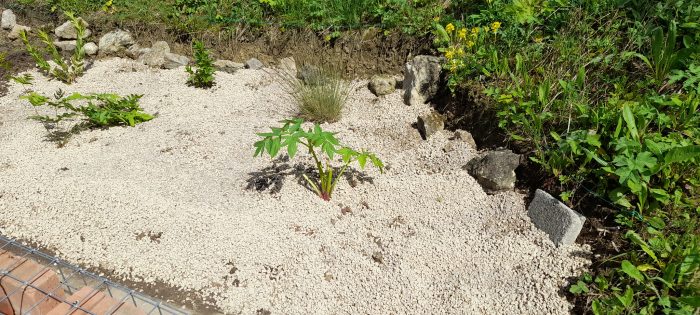
First planting May 2025
Planting has started and the limestone chips have been laid.
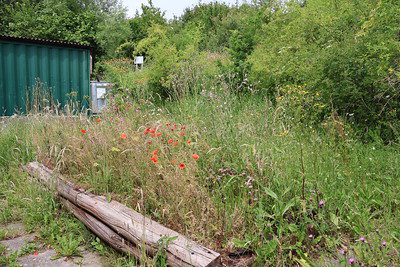
Overgrown June 2023
The area at the rear of the main building has been due for a little renovation. It will take place over a year or so and will depend on fundraising mainly for materials and planting. Volunteers will plan and implement the new features. These will emphasise sustainable gardening for a changing climate. It is likely to include:
Resilience is a term that has been used increasingly in a horticultural context as we look to the future and how we will plan for a climate of more extreme weather. But what does resilience mean when applied to the average domestic garden?
Tom Massey of the Royal Horticultural Society explains,
“The climate emergency is affecting weather patterns, and extreme events are becoming much more likely and frequent. This is causing devastation to landscapes and gardens that are ill equipped to deal with these conditions. It is not sustainable to have to start again from scratch every time an extreme event occurs, so resilient gardens that can adapt, survive and recover are extremely important.”
Evidently, the conditions of the site determine what is possible. Our soils are heavy clay sitting on a greensand bedrock and it doesn’t drain well. It is sheltered on the north-side of the main Centre building and protected by trees on a higher level. It is in shadow for much of the day. We do not use artificial chemical products on the site. There is a wild bee box nearby and an insect habitat (bug hotel). The habitat mat has been occupied by young slow worms. We want this wildlife to thrive.
The raised-beds using natural timbers had rotted to the point of needing replacement. The timber is a habitat in itself so they have been placed carefully elsewhere on the site. Instead of buying very expensive timber the new raised beds have been made with wire gabions and re-used bricks. The bricks are spaced to allow habitats for insects and reptiles. The membrane has been retained and the exhausted soil topped up with fresh soil and mulch from cuttings made elsewhere in the Centre.
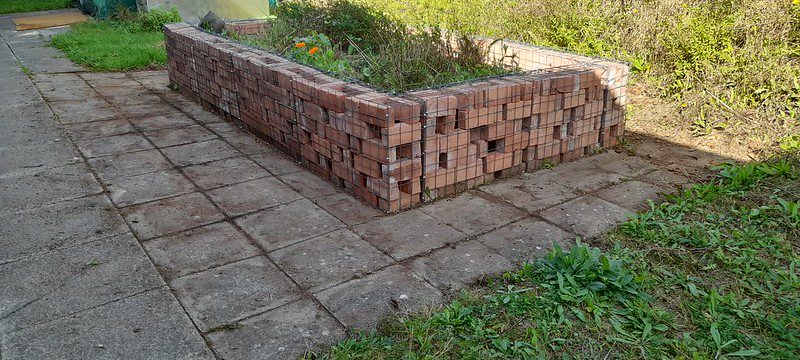
October 2023
Sensory bed
The small raised bed has been retained with the mature rosemary bush and plants added which include camomile and a mint which smells like “after-eights”.
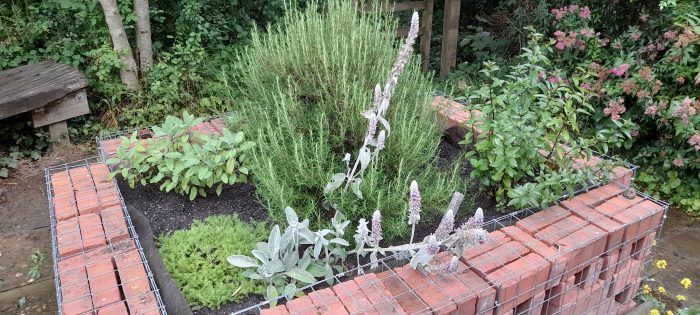
Sensory bed. July 2024
We will plant species able to survive dry periods. As an environment centre, our focus is to avoid non-native plants but some mediterranean planting will feature.
The plants in this area can tolerate seasonal wet and dry conditions. It is designed to be very wet in periods of heavier rainfall and to dry out when rainfall is scarce. This swale has recycled crushed limestone but a gravel garden would be similar. It is backed by greensand rocks and a grassy bank of wild flowers.
An area of camomile lawn will take some years to establish. Thyme is more tolerant than camomile and we might try it too.
Efficient use of rainfall is a key to a resilient garden. Our box-container, perhaps representing a summer house, has a wooden roof which channels into the water storage vessel. It is a re-used fluids transporter.
Hops represent Kent, of course, and climate change is proving to support an increase in Kent’s viticulture. Our vine is growing in a re-used steel cabinet formerly used in the kitchen.
Watch that space!
We are using these sources for our research:
The Climate Change Garden, Kim Stoddart and Sally Morgan, Quarto, 2023
RHS Resilient Garden: sustainable gardening for climate change, Tom Massey, RHS/DK, 2023
Camomile
Four camomile plants in the poor and thin soil by the path and container will take a while to establish themselves. The growth of the fifth plant in the sensory raised-bed demonstrates the difference fertile soil makes. In the first photo you can see the cardboard used for weed-suppression. The third photo here shows a willow-cutting used as a temporary barrier. It has sprouted which indicates it has resilience!
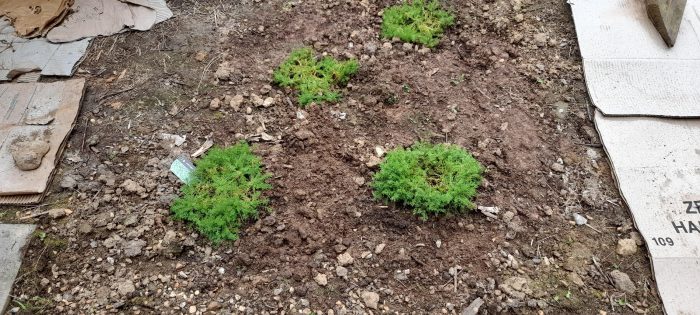
Camomile in poor soil, June 2024
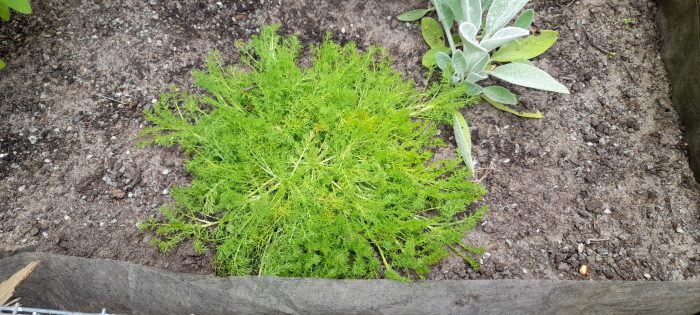
Camomile in good soil, June 2024
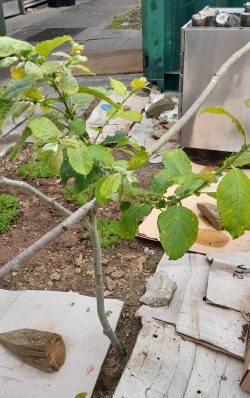
Sprouting willow. One of the “fence” posts, now removed. June 2024
Gravel planting
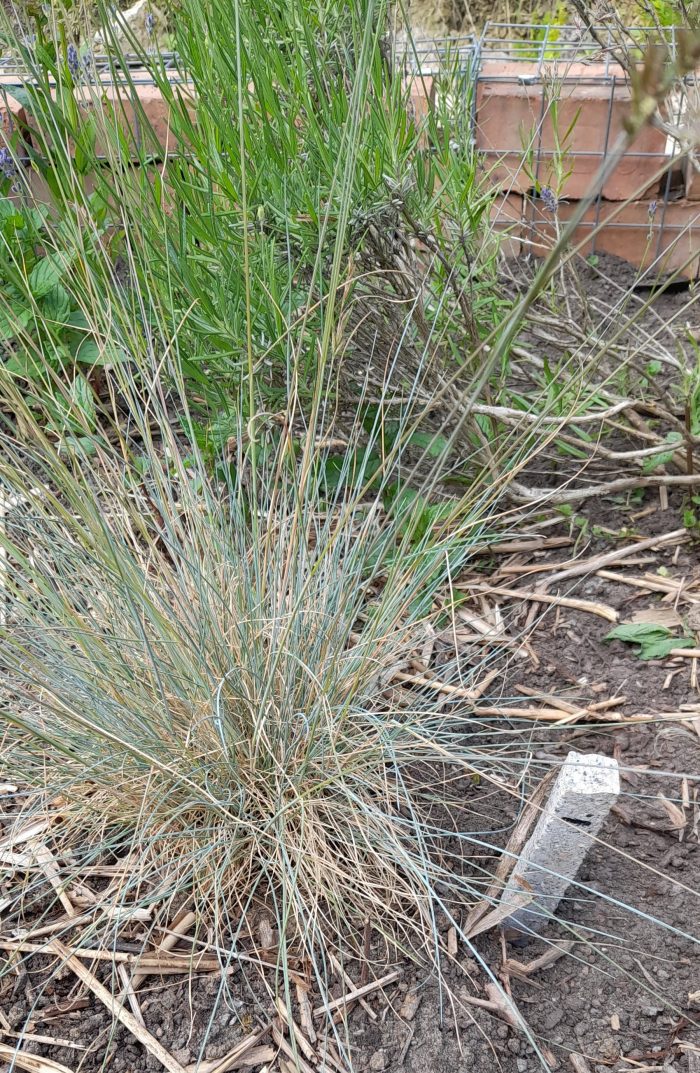
No. 1 Festuva glauca, June 2024. This one is in the raised bed.
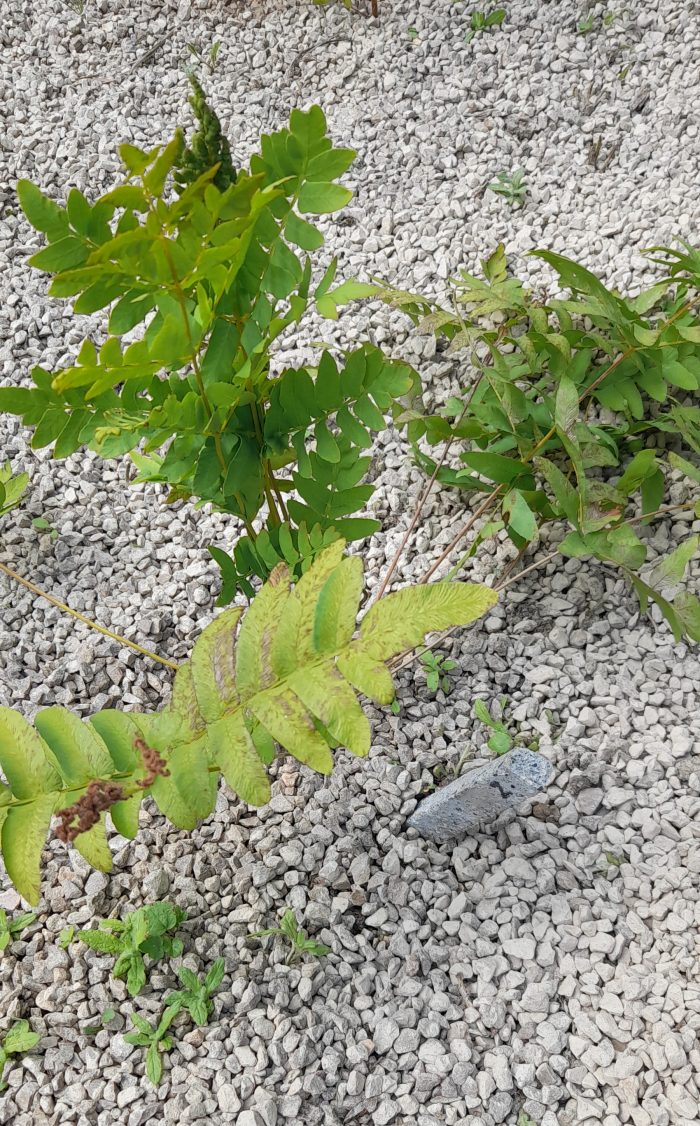
Number 2 Osmunda Regalis
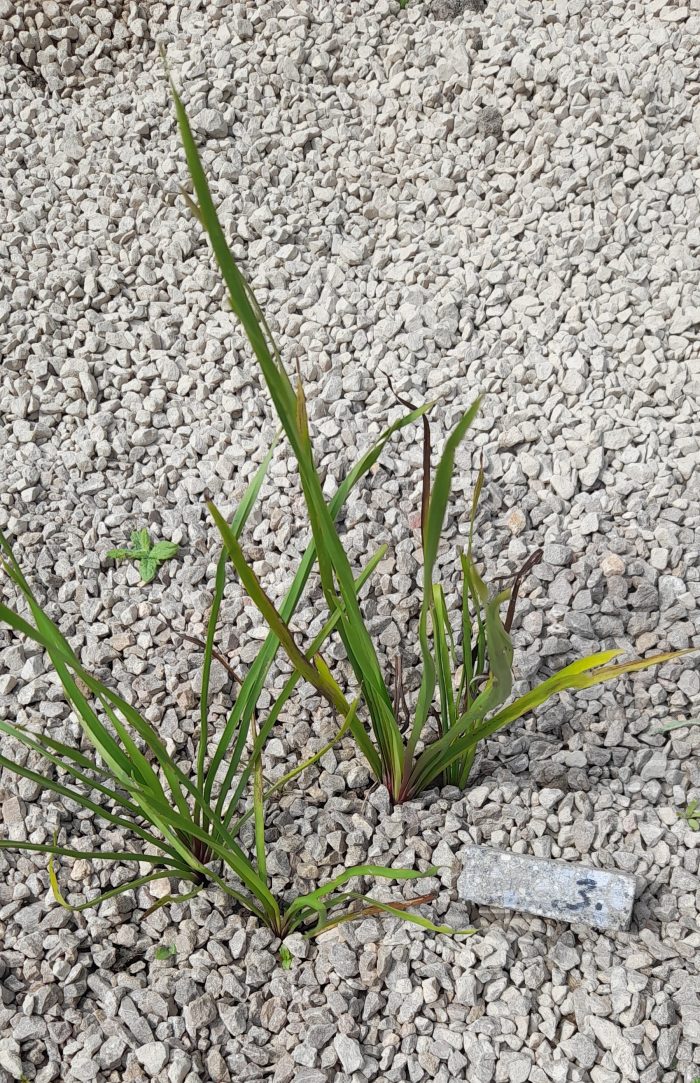
Number 3
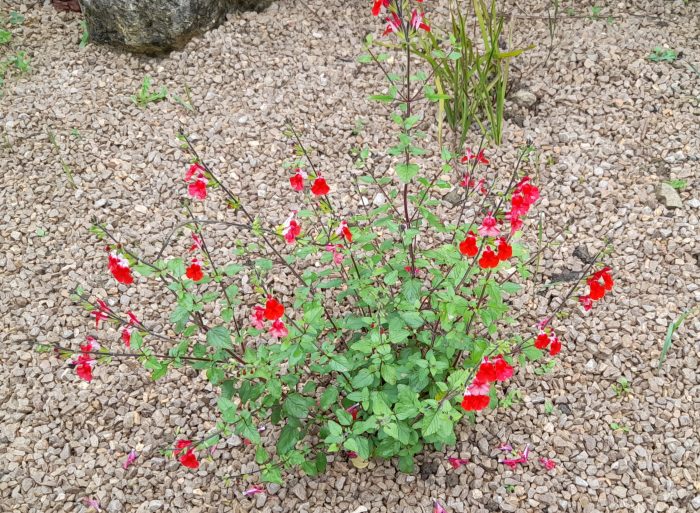
Salvia microphylla (Hotlips), July 2024
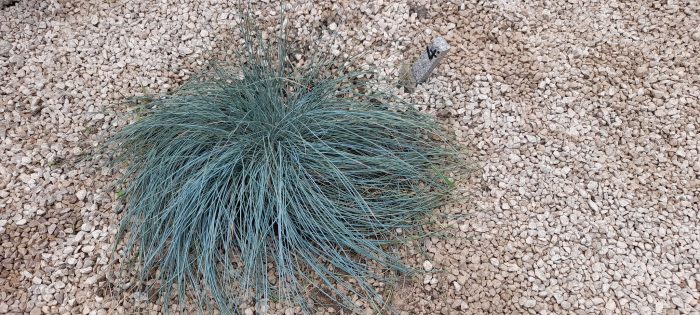
No. 4. Festuca glauca (intense blue), June 2024
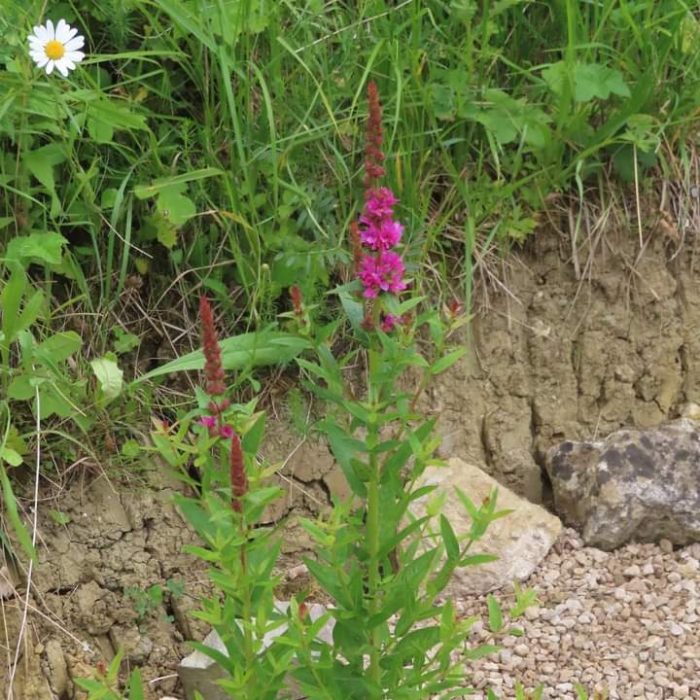
5. Lythrum Salicaria “Robert”, June 2024. aka purple loosestrife
A general view of the gravel garden in preparation shows, top left, the cardboard used for unwanted weed suppression and the back-drop rocks added for habitat provision.
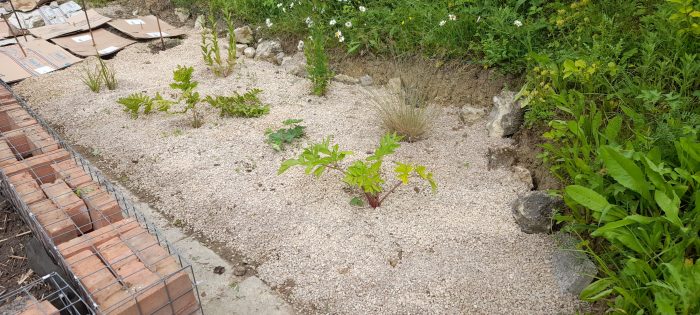
Gravel Garden, June 2024
The grape vine
The grape vine represents the changing landscape of the Kent countryside, where vinyards are being added each year. Soils in the Stour valley have been shown to be similar to the Champagne area of France. Our warmer and drier summers have made it worthwhile for production of qulaity English white wine. The grape vine we chose is not for wine-making but is called Parra (Vitis vinifera) Aldedo. It is planted in a re-purposed chiller cabinet by the green container.
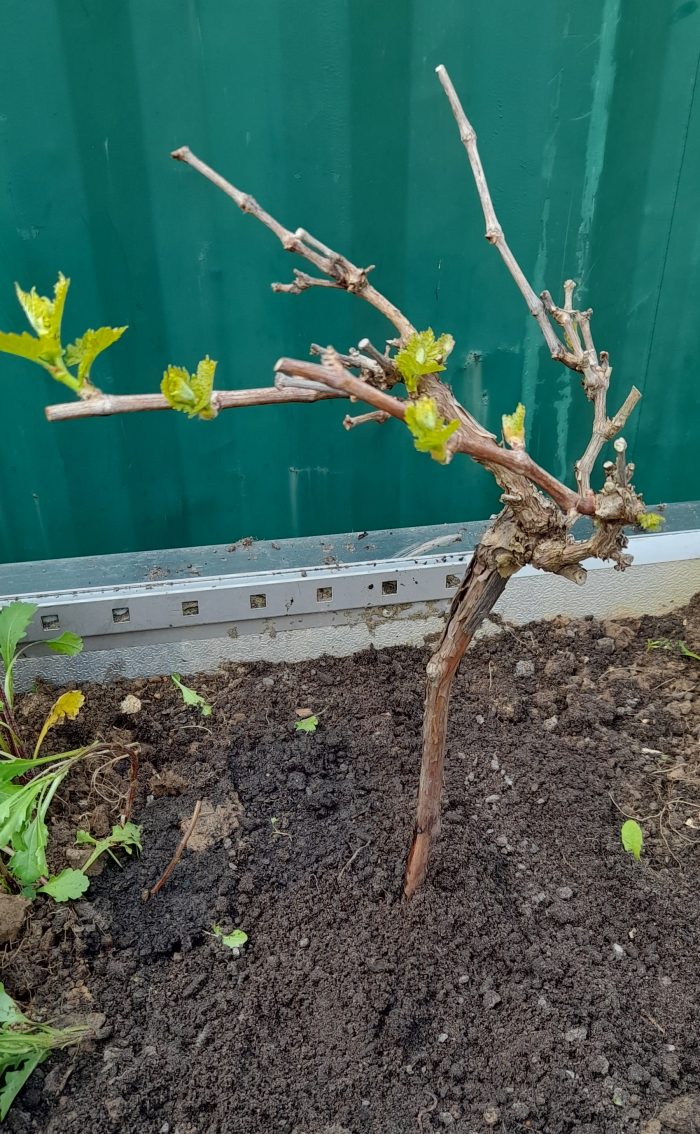
Vine planted April 2024
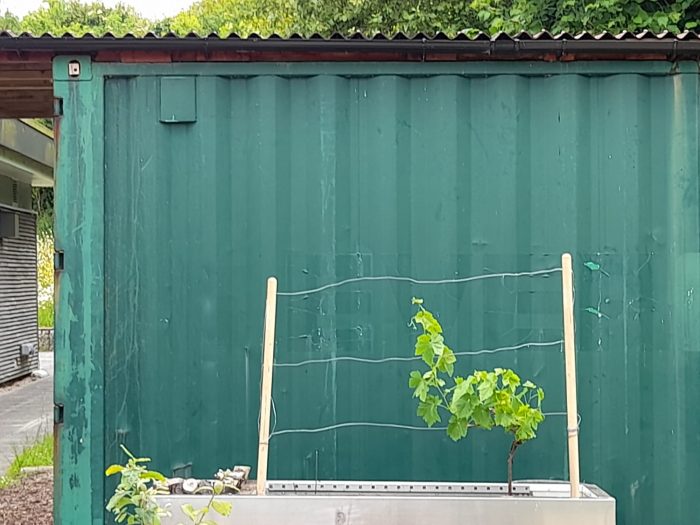
Vine, July 2024
Wild flower zone
This area has been left to its own for this year. However, it has a range of wild flowers: Oxeye Daisies, Wild Marjoram, Birds’ Foot Trefoil, Lady’s Bedstraw, Red Clover, White Clover, Common Hogweed and Rough Hawk’s Beard.
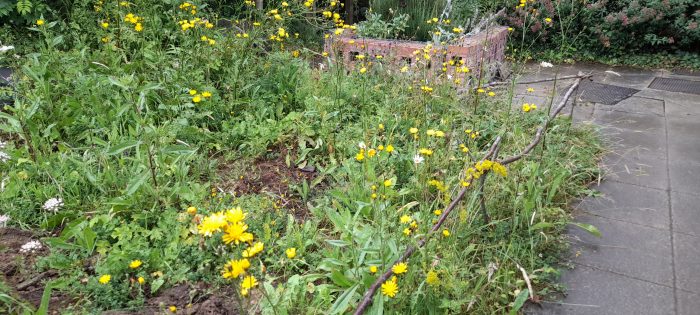
Wild flowers, July 2024
“To plant a garden is to believe in tomorrow.”
Audrey Hepburn